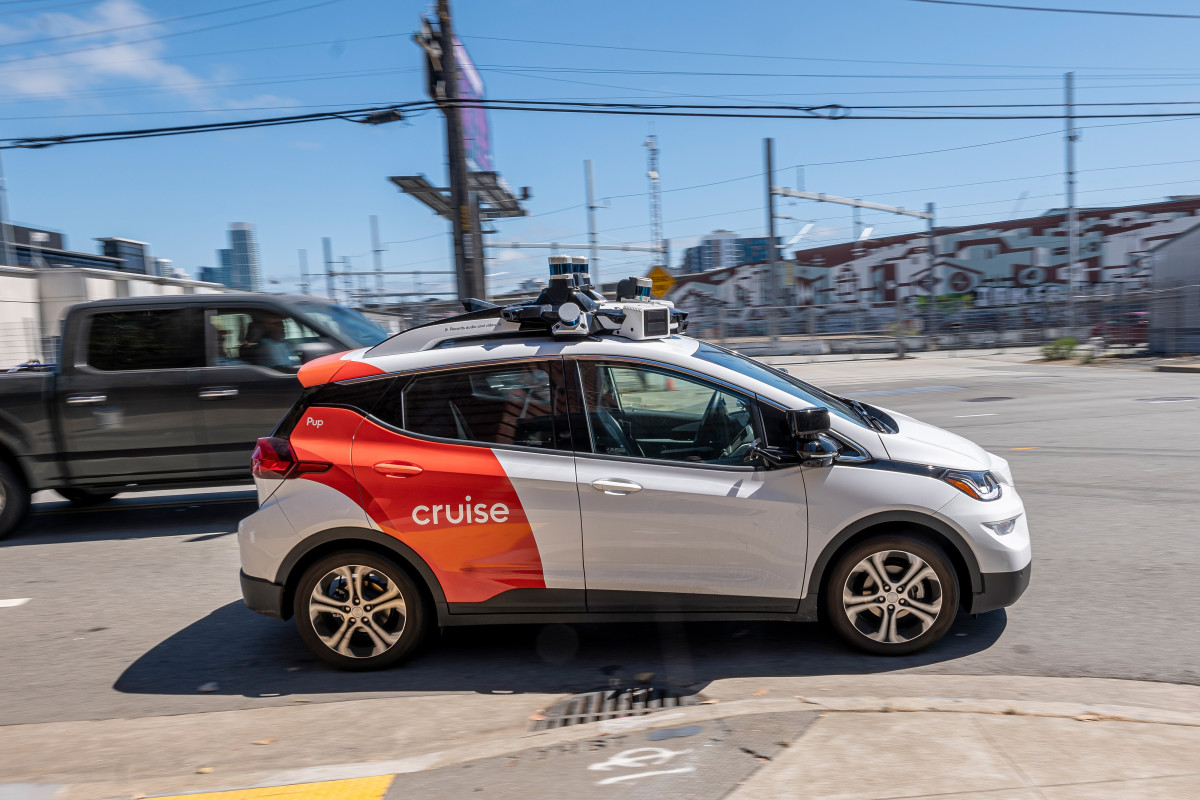
After the California Department of Motor Vehicles last month revoked Cruise's license to operate its robotaxi fleets in the state, Cruise temporarily halted its driverless operations across the country.
"The most important thing for us right now is to take steps to rebuild public trust," Cruise said in a statement at the time. "Part of this involves taking a hard look inwards and at how we do work at Cruise, even if it means doing things that are uncomfortable or difficult."
In the time since making this decision, the company said that it was temporarily halting the production of its Cruise Origin van, according to audio obtained by Forbes of CEO Kyle Vogt speaking during a recent staff meeting.
Related: GM's latest problem may spell doom for a major automotive trend
Cruise has further been accused of knowingly operating vehicles that have trouble identifying children and holes: The Intercept reported Nov. 6 that, based on internal documents, Cruise knew that its robotaxis "struggled to detect large holes in the road and have so much trouble recognizing children in certain scenarios that they risked hitting them."
The materials, according to The Intercept, explain that Cruise was concerned its vehicles might drive too fast at crosswalks or near children. The documents add that Cruise doesn't have enough data around potential scenarios involving kids: "Based on the simulation results, we can’t rule out that a fully autonomous vehicle might have struck the child,” one of the such assessments reads.
Cruise spokesperson Erik Moser, however, told TheStreet that the report is "misrepresenting" the company's practices and operations.

"There's a really big, important distinction between detecting and classification," Moser said. "We were always detecting children and pedestrians."
Moser said that the scenarios mentioned in the report came as part of the company's efforts to take "proactive, preventative measures" to enhance the performance of its vehicles.
"None of the stuff that was going on there was from on-road experiences," Moser said. "And it's all kind of interpretation of testing materials, of testing and simulation materials."
The thing to note, he said, is that Cruise's vehicles are not having trouble detecting obstructions. The vehicle, he said, would avoid an obstruction it has detected before classifying the specifics of that detection.
The Intercept noted a test drive in which a Cruise vehicle avoided a child-sized dummy, but struck it with its mirror at 28 miles per hour. Moser, in response, said that fixes have already been implemented for each of these scenarios.
"But some of that was doing testing beyond the scope of what our on-road operational design domain (ODD) was allowing," he said. "The side view mirror that was referenced, that was with the vehicle moving faster than we were allowed anywhere to go on roads."
Related: Here's what needs to happen to achieve safe self-driving cars
Despite its recent struggles, Cruise has maintained its stance on the viability of robotaxis, something the company says is paramount in reducing human-caused car accidents across the country.
Over the course of the company's first million driverless miles, Cruise said that, compared to human benchmarks, its vehicles were involved in 54% fewer overall collisions and 73% fewer collisions with meaningful risk of injury.
A recent incident involved a Cruise vehicle running over and subsequently dragging a pedestrian about 20 feet before pulling over; the loss of Cruise's license to operate in California came about as a result of communication issues around that incident, rather than safety concerns, Moser said.
Still, in lieu of humans achieving artificially general intelligence, engineering experts, citing the impossibility of a system to experience every possible edge case enough to learn them, have said that true self-driving cars can't be safely possible.
"You can never spend the money or the time, or sacrifice the lives to get there," engineer and Navy veteran Michael DeKort told TheStreet in September. "You have to experience to learn and you have to experience over and over again."
Cruise told TheStreet that it is unable to share internal data regarding the training and testing scenarios in question.
The company maintained in a statement that its "driverless operations have always performed higher than a human benchmark, and we constantly evaluate and mitigate new risks to continuously improve. We have the lowest risk tolerance for incidents with children and treat them with the highest safety priority."
"Our AVs have always detected and exercised appropriate caution around pedestrians, especially child pedestrians," the company said. "As a company, we are focused on continuously improving the ability of our technology to respond to potential hazards – which is why we proactively run rigorous testings and simulations on an ongoing basis."
Get investment guidance from trusted portfolio managers without the management fees. Sign up for Action Alerts PLUS now.







